

Golem. Prague reproduction of Golem In Jewish folklore, a golem (/ˈɡoʊləm/ GOH-ləm; Hebrew: גולם) is an animated anthropomorphic being, created entirely from inanimate matter.
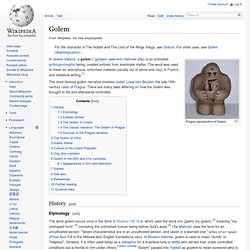
The word was used to mean an amorphous, unformed material (usually out of stone and clay) in Psalms and medieval writing.[1] The most famous golem narrative involves Judah Loew ben Bezalel, the late-16th-century rabbi of Prague. There are many tales differing on how the Golem was brought to life and afterwards controlled. History[edit] Etymology[edit] Pygmalion (mythology) In time, Aphrodite's festival day came, and Pygmalion made offerings at the altar of Aphrodite.
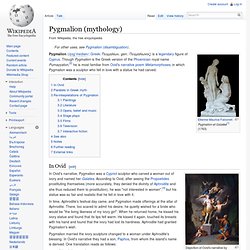
There, too scared to admit his desire, he quietly wished for a bride who would be "the living likeness of my ivory girl". When he returned home, he kissed his ivory statue and found that its lips felt warm. He kissed it again, touched its breasts with his hand and found that the ivory had lost its hardness. Aphrodite had granted Pygmalion's wish.
Doll fetish. Doll fetishism is a sexual fetish in which an individual is attracted to dolls and doll like objects such as figurines.

The attraction may include the desire for actual sexual contact with a doll, a fantasy of a sexual encounter with an animate or inanimate doll, encounters between dolls themselves, or sexual pleasure gained from thoughts of being transformed or transforming another into a doll. Role play[edit] Some individuals enjoy seeing their partners' unique characteristics minimized and adapted in favor of more uniform doll-like features.
Avatar (computing) The word avatar originates in Hinduism, where it stands for the "descent" of a deity in a terrestrial form. (Deities in India are popularly thought to be formless and capable of manifesting themselves in any form.) In Norman Spinrad's novel Songs from the Stars (1980), the term avatar is used in a description of a computer generated virtual experience. In the story, humans receive messages from an alien galactic network that wishes to share knowledge and experience with other advanced civilizations through "songs". The humans build a "galactic receiver" that describes itself: The galactic receiver is programmed to derive species specific full sensory input data from standard galactic meaning code equations.
Weird Science (film) As of 2013, a remake of Weird Science is currently in development at Universal Studios, with Joel Silver returning as producer and Michael Bacall also returning as screenwriter.[1] The film takes place in the fictitious Chicago suburb of Shermer, Illinois.
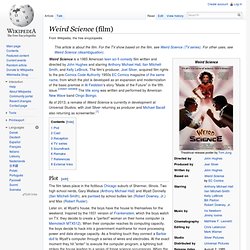
Two high school nerds, Gary Wallace (Anthony Michael Hall) and Wyatt Donnelly (Ilan Mitchell-Smith), are pantsed by school bullies Ian (Robert Downey, Jr.) and Max (Robert Rusler). In addition to being totally devoted to them, the woman has superhuman abilities, such as memory manipulation, molecular manipulation, and reality warping. The boys are too intimidated to take advantage of the obvious opportunities presented, as is shown when they keep their jeans on while showering with her. Realizing the boys need to lower their inhibitions, she transforms their outfits and then takes them out in a pink 1959 Cadillac convertible that she conjured up.
Weird Science Trailer. Frankenstein. Frankenstein; or, The Modern Prometheus, is a novel written by English author Mary Shelley about eccentric scientist Victor Frankenstein, who creates a grotesque creature in an unorthodox scientific experiment.
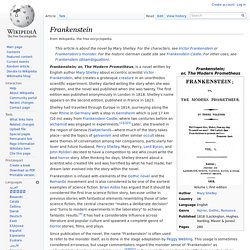
Shelley started writing the story when she was eighteen, and the novel was published when she was twenty. The first edition was published anonymously in London in 1818. The Positronic Man Isaac Asimov. The Positronic Man (1992) is a novel co-written by Isaac Asimov and Robert Silverberg, based on Asimov's novella The Bicentennial Man.
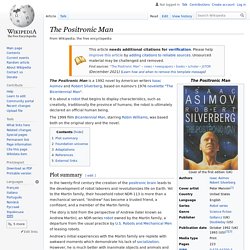
It tells of a robot that begins to display characteristics, such as creativity, traditionally the province of humans; the robot is ultimately declared an official human being. Plot summary[edit] Bicentennial Man. Galatea 2.2. Plot summary[edit] The main narrative tells the story of Powers' return to his alma mater – referred to in the novel as simply "U.

", but clearly based on the University of Illinois at Urbana-Champaign, the school Powers attended and teaches at as a professor – after he has ended a long and torrid relationship with a loving but volatile woman, referred to as "C. " Powers is an in-house author for the university, and lives for free for one year.
He finds himself unable to write any more books, and spends the first portion of the novel attempting to write, but never getting past the first line. The novel also consists of extensive flashbacks to Powers' relationship with C., from their first meeting at U., to their bohemian life in Boston, to their move to C.' Turing test. The "standard interpretation" of the Turing Test, in which player C, the interrogator, is tasked with trying to determine which player - A or B - is a computer and which is a human.
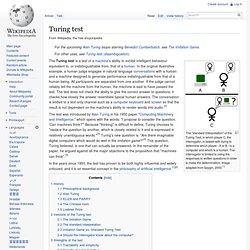
The interrogator is limited to using the responses to written questions in order to make the determination. Image adapted from Saygin, 2000. The test was introduced by Alan Turing in his 1950 paper "Computing Machinery and Intelligence," which opens with the words: "I propose to consider the question, 'Can machines think? '" Because "thinking" is difficult to define, Turing chooses to "replace the question by another, which is closely related to it and is expressed in relatively unambiguous words. " Reverse Turing test. Neo (The Matrix) A record from Agent Smith's file on Anderson and Anderson's passport show a difference in the birthday of the character.
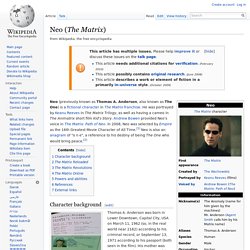
Thomas A. Anderson was born in Lower Downtown, Capital City, USA on March 11, 1962 (so, in the real world near 2162) according to his criminal record, or September 13, 1971 according to his passport (both seen in the film). His mother was Michelle McGahey (the name of the first film's art director[3]) and his father was John Anderson. He attended Central West Junior High and Owen Patterson High (named after the film's production designer). Ultimate Matrix trilogy 6 min trailer 1080p HD.
Morpheus (The Matrix) Like other hovercraft crews, Morpheus and his crew are dedicated to the protection of Zion and the freeing of humans from the Matrix.

The Matrix Online. Ubisoft backed out of an agreement to co-publish the game, not long after cancelling plans for another MMORPG. Ubisoft and Warner Bros. stated that this did not have a negative impact on their relationship. At the time, doubts about the game circled within the industry, based on the lackluster reception of the later two Matrix films and an overcrowded MMORPG market.[2] Gameplay[edit] Combat[edit] Combat is divided into two separate parts: Free-fire and Interlock. In free-fire mode, operatives exchange damage with each other. In Interlock, or Close Combat, two players exchange damage in rounds. When taking or dealing damage, one player's damage influences are pitted against another player's resistance influences of the same damage type (i.e. a gunman's ballistic damage versus an opponent's ballistic resistance). When attacking or defending against attacks, one player's accuracy influences are pitted against another's defense influences of the same attack type.
Classes[edit] Zion: Machines: